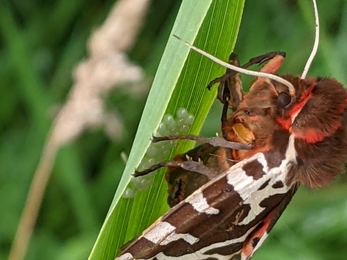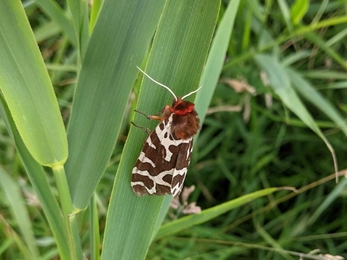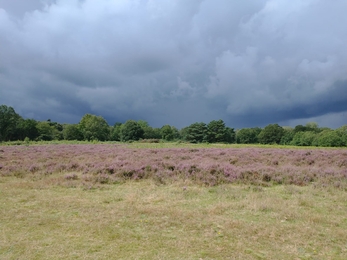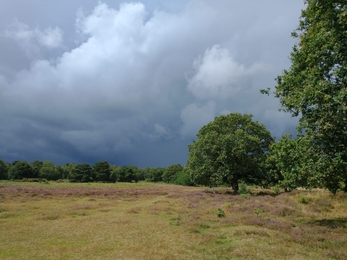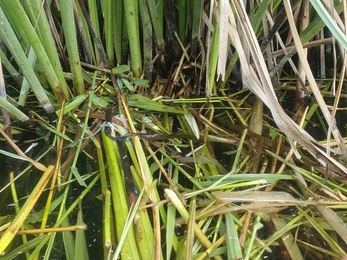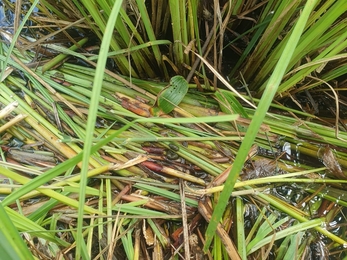Weekly wild news from our reserves - 13 August 2021
Garden tiger moth at Dingle Marshes - Jamie Smith
This beautiful garden tiger moth was spotted laying eggs at Dingle Marshes recently. A large, brightly coloured moth, the garden tiger is on the wing towards the end of the summer, during July and August. It is a night-flying moth of scrub-covered sand dunes, woodland edges, wet meadows, parks and gardens. The striking caterpillars are large, black and covered in long, dense, black and ginger hairs and they are commonly called 'woolly bears'. They feed on stinging nettles, dock leaves and many garden plants.
The garden tiger is well-protected against predators: the hairs on the caterpillar are irritating; the bright colours on the adult warn that it is unpalatable; and adults can rub their wings together to create a rasping noise.
Some very practical slacks
This film taken at Lackford Lakes shows a pantaloon bee clearing out her nest chamber. The pantaloon bee is named after its wide back legs which are used for scooping and which turn really yellow when covered in pollen. This bee only takes pollen from plants in the aster family and as a result does well on ragwort.
Carnivorous bladderwort
The dykes at Castle Marshes are currently crowded with flowering bladderwort, a carnivorous plant. The plant’s bladders, or traps, are hollow underwater structures with a flexible door or valve that is kept closed. A physiological process moves water from the interior to the exterior of the bladders, generating a state of low pressure within the traps. If a small animal triggers the bristles that project from the surface of the door, the trap suddenly opens, and a quick inflow of water sucks the prey inside. The door closes and the animal is digested. Within about 15 to 30 minutes the trap again is “set” by passing water to the exterior.
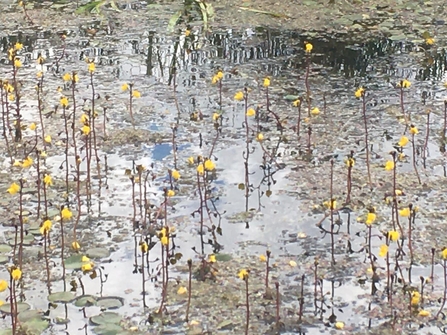
Bladderwort at Castle Marshes – Matt Gooch
Drenching downpours
The weather has been exceptionally changeable recently, with scorching sunshine being followed by drenching downpours. Site Manager Matt didn’t have time to duck for cover during this deluge!
Calm before the storm
The weather has also been fluctuating at Knettishall Heath, with amazing colours in the sunshine and a very dark sky, just before the heavens opened!
Down on the fen
Up until a few years ago Redgrave and Lopham Fen Nature Reserve was one of only three sites in the UK where the fen raft spider was known to exist. Since then, consecutive successful translocations of the species in the upper Waveney Valley and Norfolk have drawn visitor focus elsewhere, with the spiders at Redgrave taking a back seat for now. However, our staff still monitor them each year and last week Joe and Alex came across several individuals including a female swollen with eggs and a nursery web.
Tracking ‘Ratty’
One of the Trust’s major successes since the turn of the century has been conservation of habitat for water vole. Should you find yourself walking bedside a waterbody with vegetation look out for signs of this enigmatic mammal that creates latrines and feeding stations around the fringes. Water voles leave cumulative piles of droppings at their latrine, with males over marking female areas due to their much wider range of movement. Feeding stations are noticeable by an accumulation of discarded lengths of overly fibrous nibbled greenery, cut with an acute angle and often neatly stacked or lined up in rows.
Wasp spider at Carlton Marshes
The female wasp spider is a great mimic - looking just like a common wasp keeps it safe from predators, even though it is not dangerous itself - this is known as Batesian mimicry. It builds large orb webs in grassland and heathland and attaches its silk egg-sacs to the grasses. The web has a wide, white zig-zag strip running down the middle, known as a 'stabilimentum', the function of which is unclear.
Mating is a dangerous game for males; they wait at the edge of the web until the female has moulted into a mature form, then take advantage of her jaws being soft and rush in to mate. However, many males still get eaten during this time. The female wasp spider has distinctive yellow, black and white stripes, just like a common wasp. Its legs are also stripy. The male is smaller and pale brown.
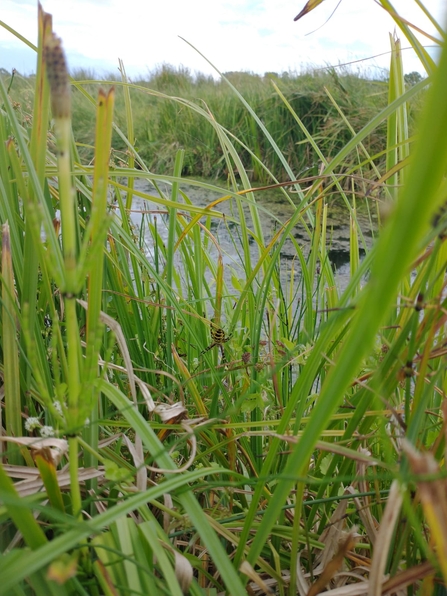
Wasp spider at Carlton Marshes – Ellen Shailes


